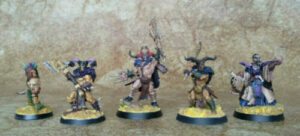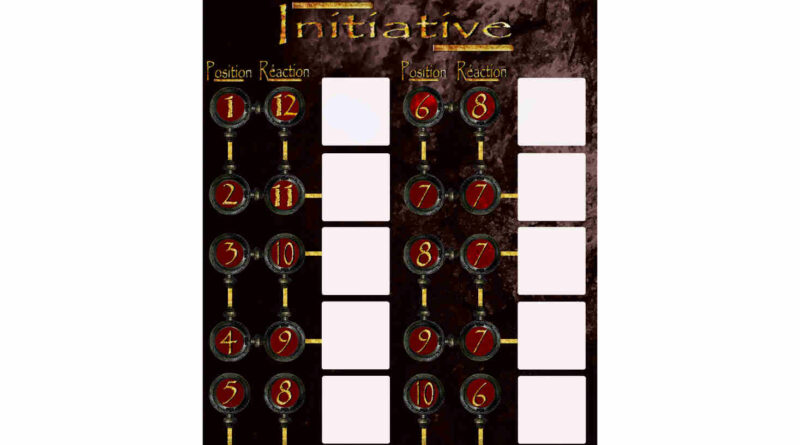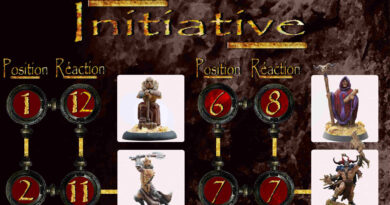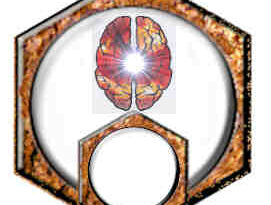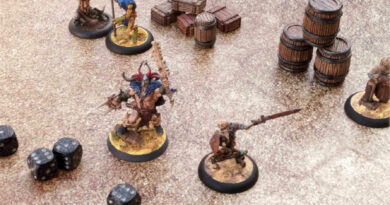Initiative
Initiative
Initiative represents the liveliness of the body and mind that can anticipate the movements and actions of opponents. It is she who will determine the order in which the fighters will act each turn.
The initiative is taken only once at the start of the game. (unless the current scenario indicates another phase).
Each of the fighters performs an aptitude test.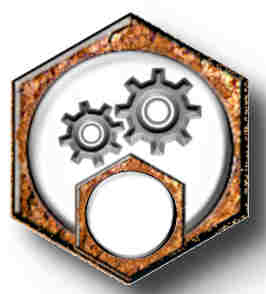
The fighter with the highest score starts the round.
Depending on the results, place the “character tokens” on the initiative board of the game board. In case of a tie, compare the remaining dice totals of each fighter, the higher score wins. In the event of a new tie, make a new aptitude test to decide between them.
Example: Filrin, faranor and Burg roll 8, 8 and 12 respectively. Burg will start first no matter what happen next. Filrin and Faranor compare their remaining dices, the higher total wins. If the sums had been equal, the 2 characters would make a new roll.
Reaction
Next to their position on the initiative grid, a number appears which represents the score to reach to attempt a reaction on a character. (see reaction chapter)
No re-roll on initiative
Dice can only be re-rolled in the event of a tie. Action points and character skills cannot affect this test.
Analyze the situation
Anticipate and get ahead of your opponents, determine which partner is in danger or even develop a new strategy.
A fighter can dedicate up to 2 actions per turn to take the time to observe the surrounding situation.
Fighter analyzing the situation performs an aptitude test against the reaction level of the character preceding him on the initiative track (the one just before him). The result must be greater than or equal to the reaction score. If successful, the two “character tokens” are reversed on the grid.
A character can spend up to 2 action tokens to add that many dices to his aptitude test (to be specified before rolling the dices).
By using an additional action token, one of the skill test dice can be re-rolled.
A character thus overtaken on the initiative track can play again when his turn comes, without recovering the action points played previously.
Aligning the initiative
During his turn, a character can wait for a better moment to act. Move the character down a notch on the initiative track as they let the action unfold. Aligning the initiative does not cost an action and a character can descend like this as long as he wishes.
The last character on the initiative track may not act during his turn.
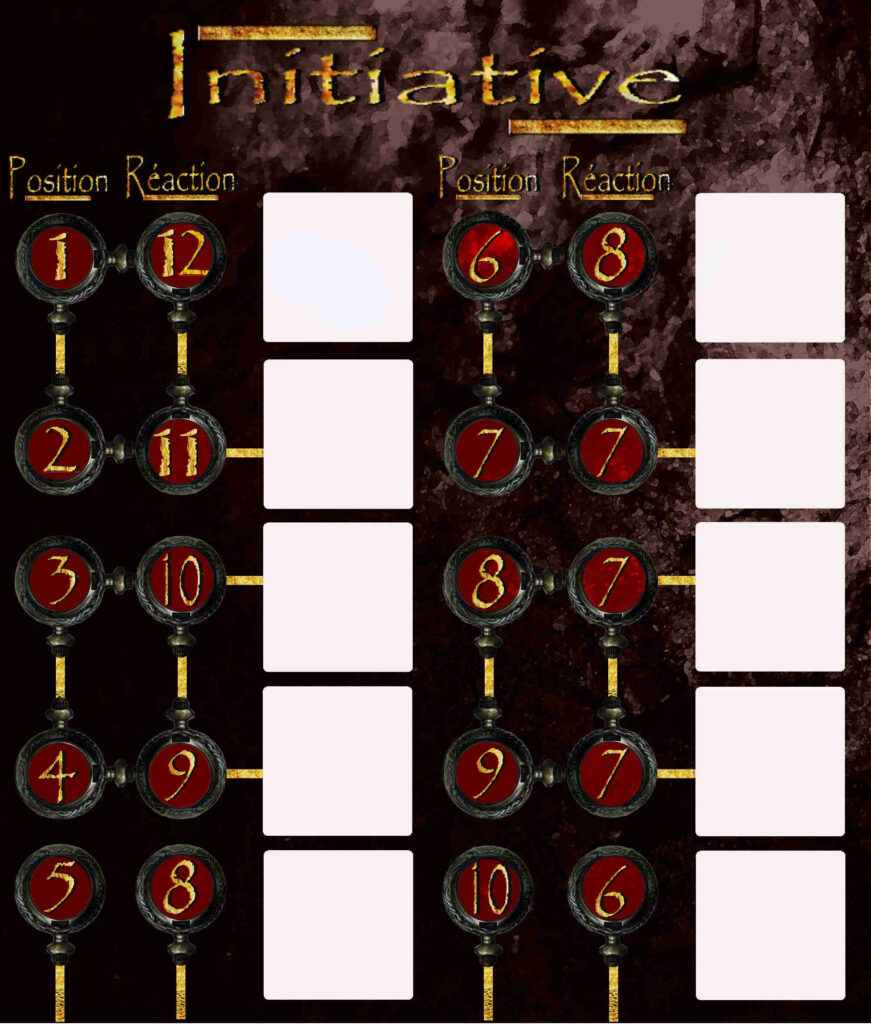

Initiative
L’initiative représente la vivacité du corps et de l’esprit qui permettent d’anticiper les mouvements et les actions des adversaires. C’est elle qui va déterminer l’ordre dans lequel les combattants vont agir à chaque tour.
L’initiative n’est effectuée qu’une seule fois en début de partie. (sauf si le scénario en cours indique une autre phase).
Chacun des combattants effectue un test d’aptitude. 
Le combattant ayant le score le plus élevé commence le tour. En fonction des résultats, placez les “jetons “personnages” sur le tableau d’initiative du plateau de jeu.
En cas d’égalité, comparez les totaux des dés restants de chacun des combattants, le score le plus élevé l’emporte. En cas d’une nouvelle égalité, faîtes un nouveau test d’aptitude pour les départager.
Exemple : Filrin, faranor et Burg obtiennent respectivement 8, 8 et 12. Burg commencera premier quoiqu’il arrive. Filrin et Faranor comparent leurs dés restants, le total le plus élevé l’emporte. Si les sommes avaient été égales, les 2 personnages feraient un nouveau jet.
Réaction.
A côté de leur position sur la grille d’initiative, apparaît un chiffre qui représente le score à atteindre pour tenter une réaction sur un personnage. (voir le chapitre réaction)
Pas de relance sur l’initiative.
Les dés ne peuvent être relancés qu’en cas d’égalité. Les points d’actions et les compétences des personnages ne peuvent pas agir sur ce test.
Analyser la situation.
Anticiper et devancer ses adversaires, déterminer quel partenaire est en danger ou encore élaborer une nouvelle stratégie. Un combattant peut consacrer jusqu’à 2 actions par tour pour prendre le temps d’observer la situation alentour.
Un combattant qui analyse la situation effectue un test d’aptitude contre le niveau de réaction du personnage le précédant sur la piste d’initiative (celui qui est juste avant lui). Le résultat doit être supérieur ou égal au score de réaction. En cas de réussite, les deux “jetons personnages” sont inversés sur la grille.
Un personnage peut dépenser jusqu’à 2 jetons actions pour ajouter autant de dés à son test d’aptitude (A préciser avant de lancer les D).
En utilisant un jeton d’action supplémentaire, l’un des dés du test d’aptitude peut être relancé.
Un personnage ainsi dépassé sur la piste d’initiative peut jouer de nouveau lorsque vient son tour, sans pour autant récupérer les points d’action joués précédemment.
Aligner son initiative.
Lors de son tour de jeu, un personnage peut attendre un moment plus propice pour agir. Descendez d’un cran le personnage sur la piste d’initiative tandis qu’il laisse l’action se dérouler. Aligner son initiative ne coûte pas d’action et un personnage peut descendre ainsi tant qu’il le souhaite.
Le dernier personnage sur la piste d’initiative peut ne pas agir durant son tour.
